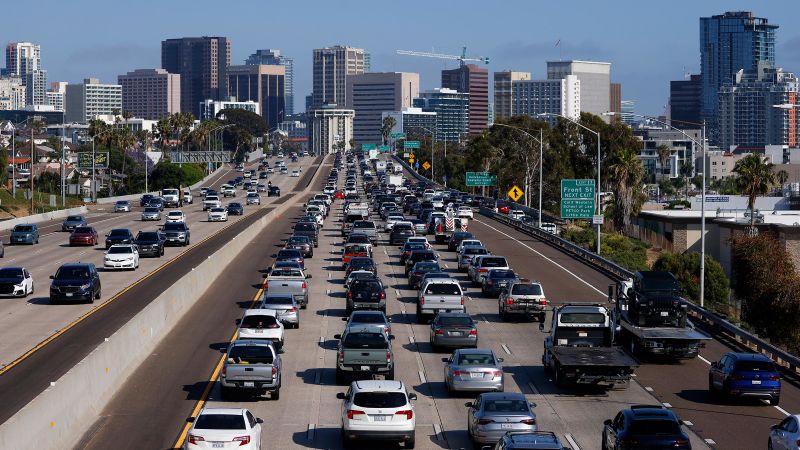The Supreme Court recently indicated that it would entertain a lawsuit from fuel producers who are challenging California’s stringent vehicle emission regulations. The discussions during the court’s session on Wednesday revealed that both conservative and liberal justices appeared to agree on the standing of the fuel companies to pursue this legal challenge. Their consensus raises significant implications for environmental regulation and the automotive market, particularly as it pertains to the transition towards electric vehicles (EVs).
Throughout the session, several justices articulated their discontent with a prior ruling by a federal appeals court in Washington, D.C., which dismissed the fuel makers’ case. The court had argued that the transition to electric vehicles resulted more from market forces than from California’s regulatory measures. Justice Clarence Thomas, aligning with the concerns of the fuel producers, asked pointedly whether the objective behind California’s emission regulations was not to diminish the reliance on their fuel. This line of questioning signifies the potential legal grounds for the fuel companies to assert injury resulting from these regulations.
Notable was Justice Elena Kagan’s contribution, who pointed out that the Environmental Protection Agency (EPA) had reinstated a waiver under the Biden administration, which ostensibly aimed to decrease reliance on fossil fuels. Kagan’s inquiry sought to clarify whether the EPA had explicitly acknowledged that reinstating such waivers would inevitably lead to reduced gasoline emissions. Justice Kavanaugh added weight to their argument, emphasizing that the federal government had not disputed the standing of the fuel producers in the prior D.C. appellate proceedings. His question hinted at what could be interpreted as a tacit acknowledgment from the government of the fuel makers’ legal grievances.
California’s extensive size and market influence have historically compelled automakers to adhere to its stricter emission standards—something made possible by an intermittent EPA waiver. This waiver has seen varying support depending on the administration, with Democratic presidents generally favoring it and Donald Trump opposing it. The Supreme Court opted not to address the broader question of the waiver’s legality, deciding instead to focus on the specific issue of whether the fuel producers have indeed suffered economic harm due to their reduced market share stemming from the rise in electric vehicles.
While many justices showed an inclination to grant the fuel producers the right to sue, there remained uncertainty regarding whether the court would establish a definitive ruling that could have ramifications for similar cases moving forward. A key legal criterion for establishing standing is redressability, which necessitates that a court order must be able to alleviate the plaintiffs’ issue. The state of California contended that even if the waiver were revoked, it would not remedy the fuel producers’ concerns due to the prevailing public shift towards electric vehicles driven by consumer demand.
Arguments presented by the parties underscored the political unpredictability surrounding the waiver’s future. Given the possibility of a forthcoming change in administration, particularly with Trump hinting at a withdrawal of the waiver, the implications of the court’s decision were underscored. Justice Samuel Alito aptly pointed out the instability with which the EPA has handled the waiver, noting that its stance had changed multiple times, raising the question of whether another shift is imminent.
The argument concluded with Edwin Kneedler, the attorney for the EPA, responding to pointed inquiries and defense from Jeffrey Wall, representing the fuel companies, who anticipated that any reinstatement of the waiver by the Trump administration would be framed as a significant deregulatory effort that benefited both fuel producers and automakers.
Amidst the tension of legal arguments, a moment of levity emerged. Chief Justice John Roberts acknowledged Kneedler, remarking on his extensive record of 160 appearances before the Court, and the justices offered him applause—a rare occurrence—marking an end to a significant chapter in his career with the Justice Department as he retires.
In summary, the case not only highlights the balancing act between environmental regulations and the economic interests of fuel producers but also signifies the ongoing dialogue about the regulatory landscape in the context of transitioning to sustainable energy sources. The outcome of this case may well determine the extent to which states can enforce stringent emissions regulations and how the future of fossil fuel markets will shape up amid growing EV adoption.



